Benefits Of Skipping Rope: 9 Proven Health & Fitness Perks
Fun yet effective exercise to try to give a boost to your immunity and become healthier.
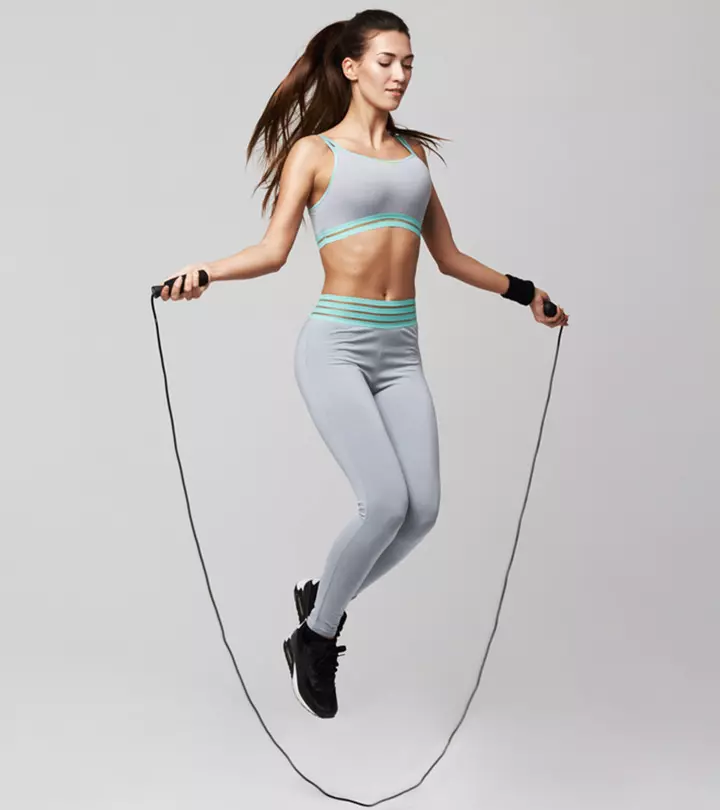
Image: ShutterStock
Is skipping good for you? Yes, irrespective of whether you want to warm up or burn calories, rope jumping is a great exercise. There are many benefits of skipping or rope jumping. This full-body workout burns 10-15 calories per minute. It’s great for shedding extra flab, improving the cardiometabolic processi he biological activity involving both metabolism and heart functions. , and toning up your body. Check out the following benefits of skipping rope.

 Workout Blueprint: Skipping
Workout Blueprint: Skipping- Frequency: 3–5 times per week
- Benefits: Improves blood circulation, aids weight management, improves coordination, and enhances muscular endurance
- Equipment Needed: Jump rope
- Space Required: Medium-sized area to move the rope
- Assistance Required: No
- Who Should Avoid: Pregnant individuals or anyone with a joint problem or lower body injury.
In This Article
Benefits Of Jumping Rope
1. May Improve Heart Health

Skipping or rope jumping is a great form of cardio exercise. It increases the heart rate. This allows the heart muscles to work harder to pump oxygenated and deoxygenated blood across the body, thereby promoting heart health and gain height.
A 12-week study on the effect of skipping on children stated that rope jumping might help reduce the risk of cardiovascular disease in younger populations (1).
2. Tones The Lower And Upper Body
Rope skipping or skipping benefits your entire body. It is a great full-body workout that helps shed fat from all parts of your body and tones you up. Jesse Feder, RD, CPT, CSCS, says, “Skipping rope is an exercise that can get your heart rate up quite easily and for the entire duration of the exercise. This really helps burn a significant amount of calories and can put you into a caloric deficit for the day, which leads to fat loss.” It will not help build lean muscle, but if you do it at a higher intensity, you will work your biceps, triceps, shoulders, calves, thighs, and glutes and may improve lower body strength as well.
Jeremiah Daniel, a fitness trainer, says, “You can also combine rope jumping with exercises that specifically target the glutes for better and quicker results, but keep in mind it’s generally harder to grow muscle if you’re in a calorie deficit.”
3. Burns Calories
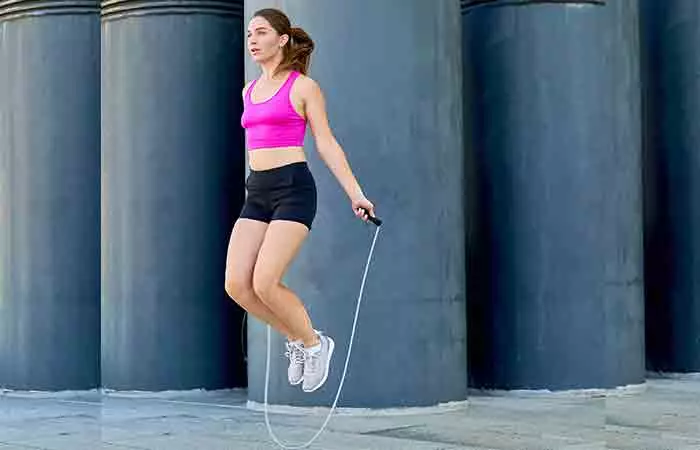
Skipping or jumping rope is a great exercise to get your body into a calorie-burning and shedding fat mode. Rope jumping should be an integral part of your workout routine if you plan to burn 500 calories a day. In a study, scientists found that rope jumping to dance music helped improve BMIi Body Mass Index, a health assessment method that calculates the height-to-weight ratio to determine how much body fat you possess. more than stationary cycle exercise (2). According to a study, 10 minutes of rope jumping is equal to 30 minutes of jogging for improved cardiovascular efficiency (3).
Start with a short session of 2-3 minutes of jumping rope every day. Increase the duration and intensity as you progress.
Alfiya, a lifestyle and fitness YouTuber, tried rope jumping for 7 days and found out that by the end of the challenge, her heart rate increased and she lost weight. She says, “My heart rate went up. It’s a really nice cardio exercise for you to do, you know it’s not that high intensity as well (i).” She reduced her waist circumference from 31.5 to 30 inches with rope jumping. She adds, “I lost 1.5 inches! I was not expecting it at all.”
4. May Improve Motor Function And Stamina
This is the reason most athletes, and especially boxers, practice jumping rope. This is one of the best cardio exercises at home. It improves coordination, strength, muscular endurance, and balance in young athletes (4), (5).
5. May Improve Pulmonary Function
Jumping rope improves circulation and breathing and enhances lung capacity (2). A study assessed that long-term aerobic exercise showed a positive influence on cardiorespiratory functions and maximal oxygen uptake (6).
6. Can Improve Bone Density

Osteoporosis and weak bones are direct causes of low bone density. Jumping rope regularly can cause bone density improvement (7). However, further research is required to understand how the duration, frequency, and intensity of rope jumping can affect bone mineral density. Moderate-intensity rope jumping is also safe for people with osteopeniai Body's decreased ability to generate bone cells efficiently, leading to bone mineral density loss. and can help increase hip bone mineral density (8).
7. May Boost Mental Health
Jumping rope with moderate intensity may have positive effects on anxiety, depression, and mood. Exercise may increase body temperature and blood circulation in the brain (9). This, in turn, may help in stress relief and improve cognitive dissonancei The discomfort a person has in their mind as a result of having two opposing opinions or ideals. and mental clarity
8. Is Easy On Your Joints
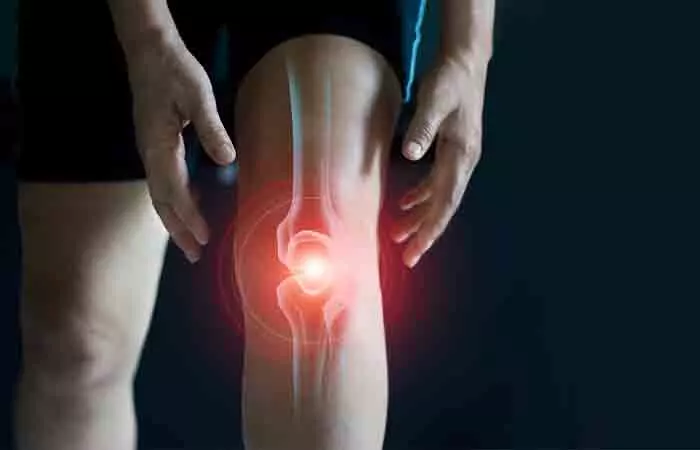
Low-intensity jump rope benefits your joints. It is easy on them and, thereby lowers the risk of injury to the knees or any other joint. The results of a study indicated that jump-rope training might improve the shoulder movement of overhead athletes (10).
9. May Improve Coordination
One of the most significant benefits of skipping ropes is improved coordination. While it may seem like a simple activity, it requires precise synchronization of your hands, eyes, and feet. As you jump over the rope, your body and brain work together to time your jumps, maintain balance, and ensure the rope clears beneath your feet. Over time, this practice enhances your hand-eye coordination, rhythm, and overall motor skills (5). In fact, it is not just about jumping, but also about maintaining a consistent rhythm and making split-second adjustments. This improved coordination enhances your agility and overall physical dexterity.
 Quick Tip
Quick TipNote: You must not try rope jumping right after surgery or a critical injury – not until your doctor and physical therapist give you a nod.
Jumping rope is an easy, effective, and simple aerobic exercise that provides a host of benefits – so blast some music and sweat it out! You can also include a 5-minute fat-burning skipping in your exercise routine to warm you up to enjoy the benefits of jumping rope.
Key Takeaways
- Skipping rope promotes your heart’s health. It helps your heart muscles work harder to pump oxygenated and deoxygenated blood.
- Rope jumping will improve your lung capacity and promote great cardio respiratory health as it helps in maximum oxygen intake.
- If you have weak bones, you should try skipping rope as it helps to increase bone mineral density.
- To start skipping, always adjust the length of the rope according to your height to avoid any slips.
How To Start Skipping
- Adjust the length of your rope.
- Hold the handles at the ends of the rope – one in each hand.
- Step in the middle of the rope, keeping the length taut with the ends stretched upwards. Shorten the rope until both ends reach your armpits.
- Step in front of the rope and swing it from the back to the front.
- As the rope reaches your feet, jump. Keep your legs straight.
- Land softly on the floor.
While following these steps, sometimes people also make certain mistakes which can lead to more harm than good. To prevent that, practice the following as well:
- Warm up before and cool down after your session to prevent injuries.
- Ensure you adjust it as per your height. If your rope is too long or too short, it can hinder your ability to jump effectively.
- Avoid holding the handles too tightly, as it may lead to tension in your arms and shoulders.
- Avoid jumping too high, as it may reduce efficiency and cause fatigue.
- Avoid keeping your limbs too rigid while skipping, as it may affect your flow. Instead, maintain a relaxed posture.
 Quick Tip
Quick TipOnce you ace the skipping technique, you may also try its various variations. Learn more about them in the next section.
Here are different skipping variations you can try:
- Alternate Foot Jump: This requires you to jump on one foot at a time, alternating feet like jogging in place. The rope passes under one foot at a time.
- Criss-Cross Skipping: This requires you to jump normally. As the rope comes over your head, you cross your arms in front of your body and jump through the loop formed. Uncross your arms on the next jump.
- High Knee Skipping: This requires you to perform the alternate foot jump and lift your knees towards your chest with each jump.
- Double Unders: This requires you to swing the rope fast enough to pass under your feet twice.
If skipping is a means to the end of your fitness journey, you need to know how long you must do your sets for the best benefit. We have discussed it in the section below.
Duration Of Rope Skipping
Start with 1-minute rope jumps. Increase the intensity and duration of rope skipping as you become comfortable. Increase the duration every week by at least 1-2 minutes. You should be able to jump rope for 10-15 minutes. Make sure to take breaks, sip on your electrolyte drink, and get jumping again.
Feder says, “Anytime you adopt a new exercise routine, you will likely see results within the first month of doing it, especially if you are new to exercising overall. However, if you are generally in good shape and already exercise, you may need to stick with it for up to 3 months before really noticing any changes. Additionally, if you do not see results within this time period, it does not necessarily mean it is not working. It could mean you need to increase the time and/or intensity of the exercise.”
Precautions
- Warm-up for at least 10 minutes before jumping rope.
- Wear shock-absorbing shoes.
- Wear a sports bra to prevent the sagging of breasts.
- Sip electrolyte water before and after a workout.
- Cooldown by stretching.
Before you start skipping, check in with a doctor or certified trainer, especially if you have any health issues. They will help ensure it is safe and fit your specific needs. In some cases, you may also need to avoid skipping. Scroll down to find more.
Avoid Rope Jumping If
- You have heart problems. Do it only if your doctor gives you a green signal.
- You are recovering from a serious illness or surgery.
- You have high blood pressure. Take your doctor’s opinion.
- You have a bone injury.
Infographic: Benefits Of Skipping
Exercising with a skipping rope has many benefits, such as burning calories, toning the body, and improving heart health.
If you are new to skipping, it can be tough to decide how often or how much time you should dedicate to this exercise. If you push too much, you can tire yourself and risk an injury. The key is to keep pushing yourself a little more than you did the previous day.
If you are a beginner, check out the infographic below to understand how much you should skip per week. Illustration: StyleCraze Design Team
Skipping is a great way to burn calories and shed those extra pounds you have gained. From improving your cardiovascular fitness to endurance training, it enhances your lung capacity and reduces anxiety and depression, the benefits of skipping are wide-ranging. It is ideal for beginners to go for 1-minute rope jumps and gradually increase it by one or two minutes every week. Make sure you warm up your body before skipping, and invest in good shock-absorbing shoes and a sports bra. If you have any heart or blood pressure issues, consult your doctor and proceed only if you get the go-ahead.
Frequently Asked Questions
What happens if I jump rope every day?
Daniel says, “You could start to feel some of the benefits of regularly engaging in cardio exercises, such as good cardiovascular health, coordination improvement and increased agility, improved sleep, and reduced anxiety. If your goal is weight loss, then ultimately, you should rely on following a healthy diet as this promotes weight loss. Any type of exercise is very much useless unless you change your diet, and jumping rope is no different.”
Is skipping alone enough to lose weight?
Feder says, “Skipping alone is enough to lose weight, however, only if done consistently for a good amount of time and intensity. If you were to just skip rope once a week, you would most likely not lose weight. However, if you are able to skip rope daily or at least 2-3 times a week for 30-45 minutes at an intensity that gets your heart rate up, then you will more than likely start to see weight loss. An easy indicator to see if you are working at a good intensity is if you are breathing heavily and sweating throughout the exercise.”
Is 1000 skips a day good?
It depends on your age, fitness levels, purpose, and intensity of the workout.
Does skipping affect breast size?
Skipping doesn’t affect breast size, but it may bring about changes to their shape and form if you don’t support them well enough with a well-fitted sports bra.
Is skipping better than running?
Both are good and effective ways to burn calories. It depends on your preference for the day. While running can give you a wholesome experience of the outdoors, skipping doesn’t require much space and can be done anywhere.
Is jumping rope good for abs?
While it helps you lose calories, jumping rope doesn’t target your abdominal muscles.
Illustration: Benefits Of Skipping Rope, How To Start, And Precautions
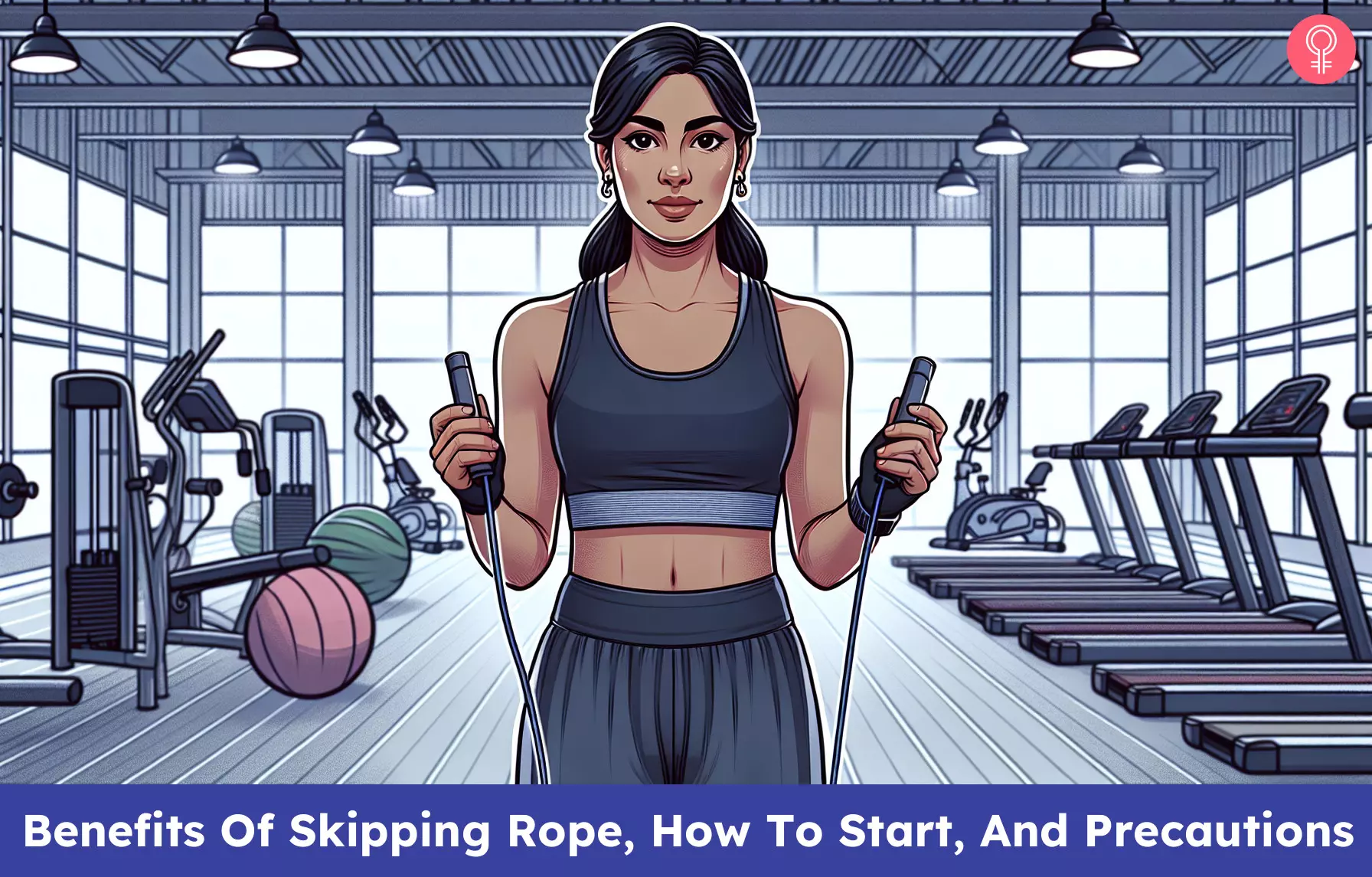
Image: Dall·E/StyleCraze Design Team
Jump rope for just 5 minutes a day and watch your body transform! Get ready to see amazing results in your strength, endurance, and overall health. Check out this video to know more!
Personal Experience: Source
StyleCraze's articles are interwoven with authentic personal narratives that provide depth and resonance to our content. Below are the sources of the personal accounts referenced in this article.
i. I Took The 7 Day Jumprope Challenge
https://www.youtube.com/watch?v=VgiiLqWmPik
References
Articles on StyleCraze are backed by verified information from peer-reviewed and academic research papers, reputed organizations, research institutions, and medical associations to ensure accuracy and relevance. Read our editorial policy to learn more.
- The effects of a 12-week jump rope exercise program on abdominal adiposity, vasoactive substances, inflammation, and vascular function in adolescent girls with prehypertension, European Journal of Applied Physiology, US National Library of Medicine, National Institutes of Health.
https://pubmed.ncbi.nlm.nih.gov/30554386/ - The effects of dance music jump rope exercise on pulmonary function and body mass index after music jump rope exercise in overweight adults in ’20s, Journal of Physical Therapy Science, US National Library of Medicine, National Institutes of Health.
https://www.ncbi.nlm.nih.gov/pmc/articles/PMC5574342/ - Comparative Training Responses to Rope Skipping and Jogging, The Physician and Sportsmedicine, US National Library of Medicine, National Institutes of Health.
https://pubmed.ncbi.nlm.nih.gov/27456637/ - The effects of rope or weighted rope jump training on strength, coordination and proprioception in adolescent female volleyball players, The Journal of Sports Medicine and Physical Fitness, US National Library of Medicine, National Institutes of Health.
https://pubmed.ncbi.nlm.nih.gov/21681154/ - Jump Rope Training: Balance and Motor Coordination in Preadolescent Soccer Players, The Journal of Sports Science and Medicine, US National Library of Medicine, National Institutes of Health.
https://pubmed.ncbi.nlm.nih.gov/26664276/ - The effect of long-term aerobic exercise on maximal oxygen consumption left ventricular function and serum lipids in elderly women, Journal of Physiological Anthropology and Applied Human Science, US National Library of Medicine, National Institutes of Health.
https://pubmed.ncbi.nlm.nih.gov/12672978/ - Rope skipping increases bone mineral density at calcanei of pubertal girls in Hong Kong: A quasi-experimental investigation, PLOS One, US National Library of Medicine, National Institutes of Health.
https://www.ncbi.nlm.nih.gov/pmc/articles/PMC5722366/ - Effectiveness of resistance training or jumping-exercise to increase bone mineral density in men with low bone mass: a 12-month randomized, clinical trial, Bone, US National Library of Medicine, National Institutes of Health.
https://www.ncbi.nlm.nih.gov/pmc/articles/PMC4503233/ - Effects of exercise on anxiety, depression and mood, Psychiatria Polska, US National Library of Medicine, National Institutes of Health.
https://pubmed.ncbi.nlm.nih.gov/15518309/ - The effects of jump-rope training on shoulder isokinetic strength in adolescent volleyball players, Journal Of Sport Rehabilitation, US National Library of Medicine, National Institutes of Health.
https://pubmed.ncbi.nlm.nih.gov/20543219/
Read full bio of Madhu Sharma
- Jeremiah Daniel is a Level 4 Personal Trainer with a decade of experience as a gym instructor. He is also the co-founder and CEO of Moonlight Reviews and an experienced hiking guide.
 Jeremiah Daniel is a Level 4 Personal Trainer with a decade of experience as a gym instructor. He is also the co-founder and CEO of Moonlight Reviews and an experienced hiking guide.
Jeremiah Daniel is a Level 4 Personal Trainer with a decade of experience as a gym instructor. He is also the co-founder and CEO of Moonlight Reviews and an experienced hiking guide. - Jesse Feder, RDN/LDN, is a Clinical Dietitian at the Memorial Regional Hospital. He is also a certified by the American College of Sports Medicine as a personal trainer (ACSM-CPT) and the National Strength and Conditioning Association as a Certified Strength and Conditioning Specialist (NSCA-CSCS).
 Jesse Feder, RDN/LDN, is a Clinical Dietitian at the Memorial Regional Hospital. He is also a certified by the American College of Sports Medicine as a personal trainer (ACSM-CPT) and the National Strength and Conditioning Association as a Certified Strength and Conditioning Specialist (NSCA-CSCS).
Jesse Feder, RDN/LDN, is a Clinical Dietitian at the Memorial Regional Hospital. He is also a certified by the American College of Sports Medicine as a personal trainer (ACSM-CPT) and the National Strength and Conditioning Association as a Certified Strength and Conditioning Specialist (NSCA-CSCS).
Read full bio of Ravi Teja Tadimalla
Read full bio of Moksha Gandhi









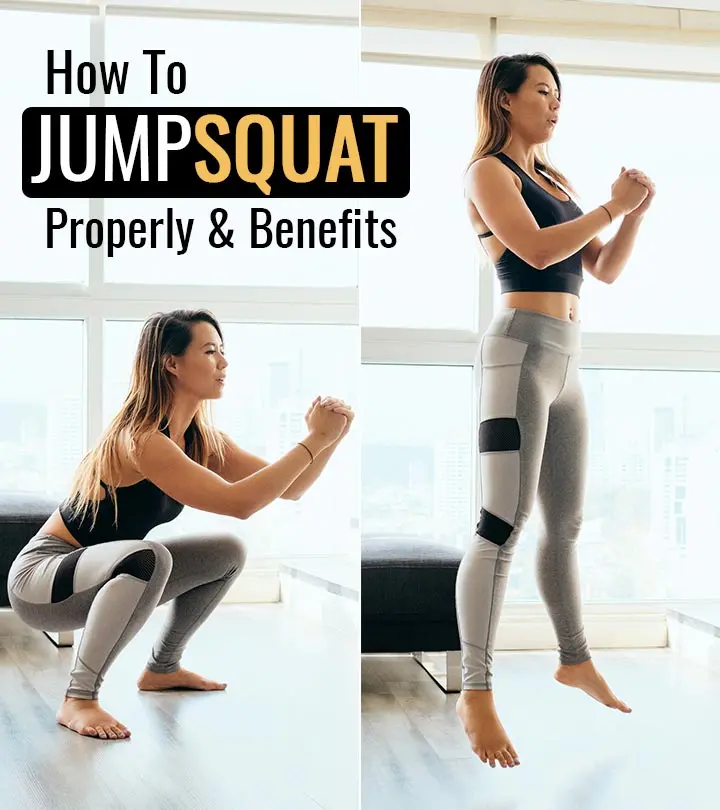
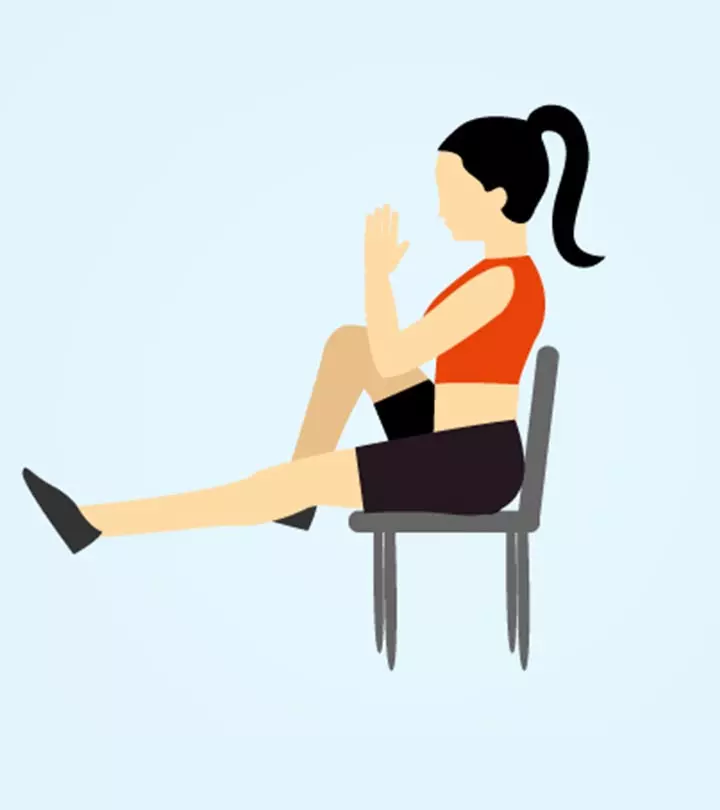





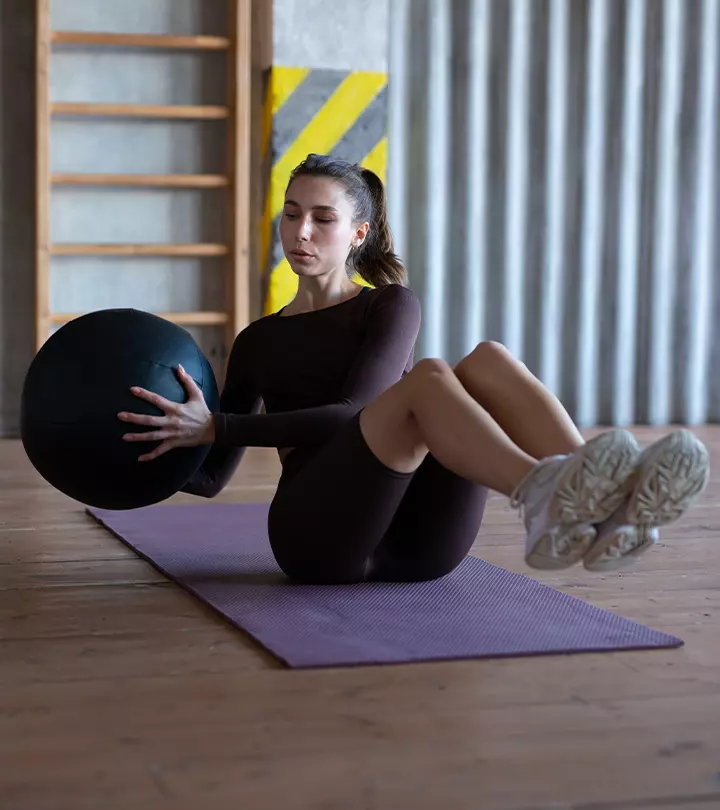







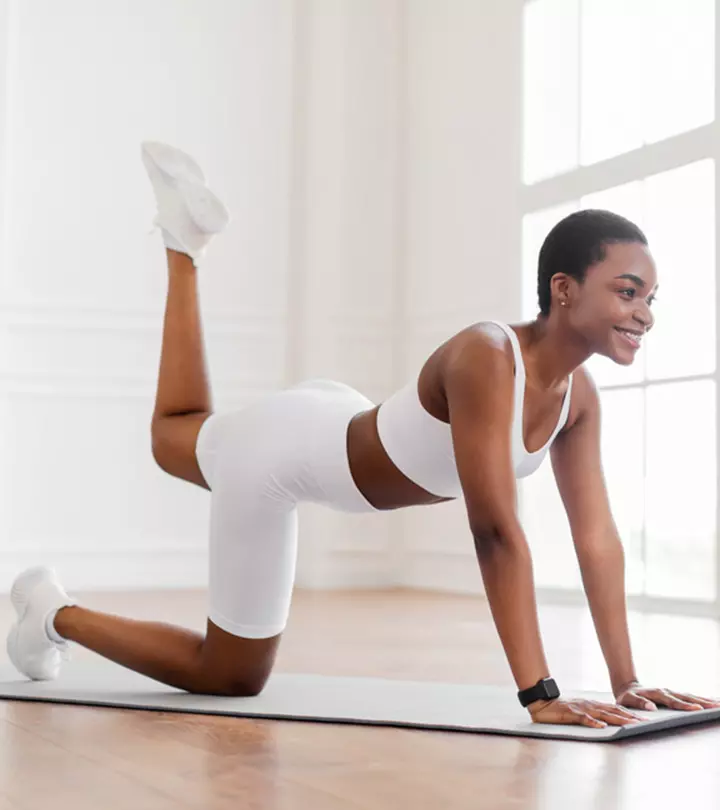

Community Experiences
Join the conversation and become a part of our empowering community! Share your stories, experiences, and insights to connect with other beauty, lifestyle, and health enthusiasts.